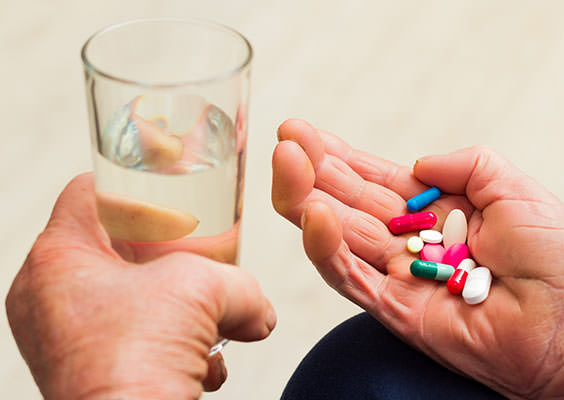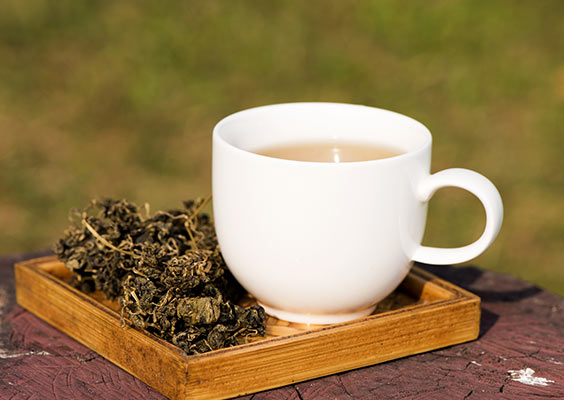How Parkinson’s Affects Daily Life
Parkinson’s kills off the neurons in the part of your brain you use to control the movement of your body.
That’s why Parkinson’s patients find it increasingly difficult to walk or get out of a chair. It’s a terribly degenerative disease. Victims suffer tremors, muscular weakness and stiffness, all of which grow progressively worse over time.

Mainstream Parkinson’s Disease Treatments
Mainstream medicine typically turns to prescription drugs and sometimes surgery to treat Parkinson’s.

Parkinson’s Disease Treatments I Recommend
I recommend an all-natural Parkinson’s treatment for my patients at the Sears Institute for Anti-Aging Medicine… and the treatment usually includes fasting.
Research has shown for some time that fasting can protect your brain and reduce the risk of Parkinson’s.
A recent study in The Journal of Neuroscience shows that fasting works as a treatment for Parkinson’s because of the AMPK it produces.1
AMPK is a powerful little protein that behaves just like an enzyme in your body. It’s found inside every cell in your body and serves as a kind of “master regulating switch.”
When AMPK is increased, your body kicks into high gear and functions with youthful vitality.

Researchers from the Monash Biomedicine Discovery Institute in Australia put mice on a severely restricted diet. As a result, the mice produced more ghrelin, the hormone that regulates hunger.
Then they showed that ghrelin activates AMPK in the brain, which then triggers brain cells to go into survival mode.
So, by eating less, the mice naturally boosted their AMPK levels — and protected the part of the brain that’s attacked by Parkinson’s.
The problem is that AMPK levels decline as you age.2
Old cells with low AMPK become clogged with debris. They operate at lower efficiency. These junk-laden cells speed up the aging process. And they are
one of the key contributors to neurodegenerative diseases like Parkinson’s.3Research shows that AMPK also:
- Extends cellular life span;4
- Improves glucose uptake and lowers your blood sugar;5
- Keeps you slim by burning stored fat and preventing it from being stored;6
- Protects you against the diseases of aging by reducing inflammation;7
- Increases your mitochondria, the tiny powerhouses in your cells.8
Fasting is one of the ways in which your body can ramp up its AMPK levels — no matter what your age. But I’m not talking about living on water for 40 days.
How to Fast Without Missing a Meal
I help my patients get the benefits of fasting with a safe, simple trick. You just have to divide your day into an eight-hour “eating window,” followed by a 16-hour fast. Here’s how it works…
- Start your day with a 10 a.m. breakfast;
- Eat lunch at your regular time;
- Finish your dinner by 6 p.m.
- Don’t eat anything from 6 p.m. until 10 a.m. the following morning.
Most of my patients find this “intermittent” fasting easy to do. They don’t feel hungry. But if fasting is not for you, there are other ways to trigger AMPK activity.
Boost AMPK Naturally with the Vine of Immortality
Chinese medicine has known for centuries about an amazing anti-aging vine they call Jiaogulan. Known to botanists as Gynostemma pentaphyllum, it belongs to the cucumber family.
In traditional Asian medicine, G. pentaphyllum is used to promote longevity.9 And modern science proves it works by promoting AMPK activity.10
You can find supplements containing G. pentaphyllum online. To get the calorie restriction effects — without starving yourself — I recommend taking 150 mg per day.
To make a tea, you can buy the leaves of G. pentaphyllum online and at specialty health stores. Research shows that drinking G. pentaphyllum tea daily can lower blood sugar levels and improve insulin sensitivity. Just boil water and add six grams of the leaves. Let it steep for 10 minutes and then strain.

Exercise with PACE
AMPK activity can be increased with vigorous exercise, like my PACE program.11
When you exercise, AMPK “takes the temperature” of your cells to see how much energy you have. As you deplete glycogen during a PACE workout, AMPK swings into full effect. It tells your muscles to convert blood sugar and store it as energy in the muscle, instead of turning it into body fat. Now you have energy available for the next time you ask your muscles to do a similar kind of exertion. At the same time you start breaking down fat you’ve already stored away.12

And when your AMPK switch is turned on with PACE, you get all the other anti-aging benefits of this remarkable molecule, as well as protecting your brain from Parkinson’s.
To Your Good Health,
![]()
Al Sears, MD, CNS
References
1. Bayliss JA, Lemus MB, “Ghrelin-AMPK Signaling Mediates the Neuroprotective Effects of Calorie Restriction in Parkinson’s Disease.” The Journal of Neuroscience. March 2016, 36(10): 3049-3063; doi: 10.1523.
2. Salminen A, Kaarniranta K. “AMP-activated protein kinase (AMPK) controls the aging process via an integrated signaling network.” Ageing Res Rev. 2012;11(2):230-41.
3. Hindle JV. “Ageing, neurodegeneration and Parkinson’s disease.” Age Ageing. 2010;39(2):156-61.
4. Salminen A, Kaarniranta K. “AMP-activated protein kinase (AMPK) controls the aging process via an integrated signaling network.” Ageing Res Rev. 2012 Apr;11(2):230-41.
5. Friedrichsen M, Mortensen B, Pehmøller C, Birk JB, Wojtaszewski JF. “Exercise-induced AMPK activity in skeletal muscle: role in glucose uptake and insulin sensitivity.” 2013. Molecular Cell Endocrinol. 25;366(2):204-14.
6. Luo Z, Zang M, Guo W. “AMPK as a metabolic tumor suppressor: control of metabolism and cell growth.” Future Oncol. 2010;6(3):457-70.
7. Bijland S, Mancini SJ, Salt IP. “Role of AMP-activated protein kinase in adipose tissue metabolism and inflammation.” Clin Sci (Lond). 2013;124(8):491-507.
8. Niemann B, Pan R, Teschner M, Boening A, Silber RE, Rohrbach S. “Age and obesity-associated changes in the expression and activation of components of the AMPK signaling pathway in human right atrial tissue.” Exp Gerontol. 2013;48(1):55-63
9. Li XL, Wang ZH, Zhao YX, et al. “Isolation and antitumor activities of acidic polysaccharide from Gynostemma pentaphyllum Makino.” Carbohydr Polym. 2012;89(3):942-7.
10. Gauhar R, Hwang SL, Jeong SS, et al. “Heat-processed Gynostemma pentaphyllum extract improves obesity in ob/ob mice by activating AMP-activated protein kinase.” Biotechnol Lett. 2012 Sep;34(9):1607-16.
11. Hardie DG. “AMP-activated protein kinase: a key system mediating metabolic responses to exercise.” Med Sci Sports Exerc. 2004. 36(1):28-34.
12. O’Neill H. “AMPK and Exercise: Glucose Uptake and Insulin Sensitivity.” Diabetes Metab J. 2013;37(1):1-21.
